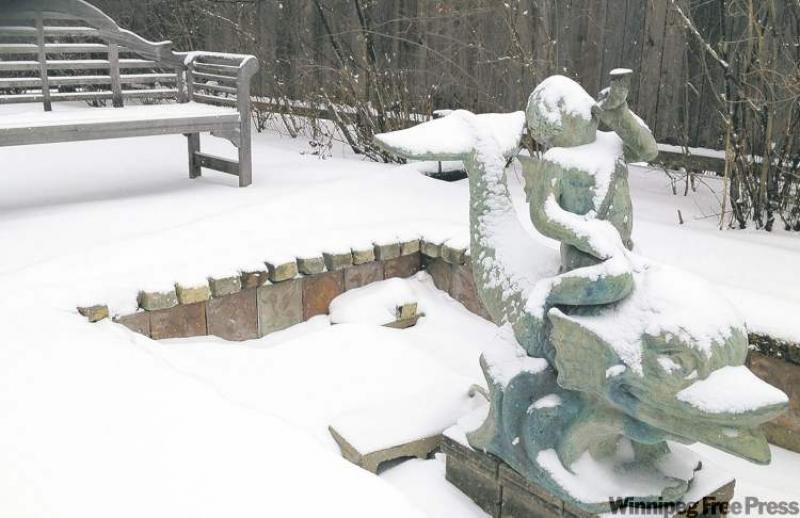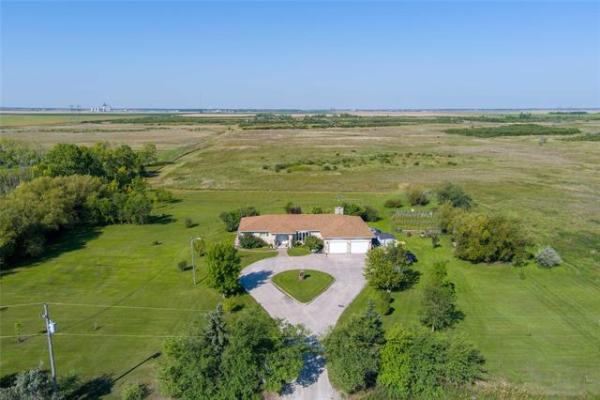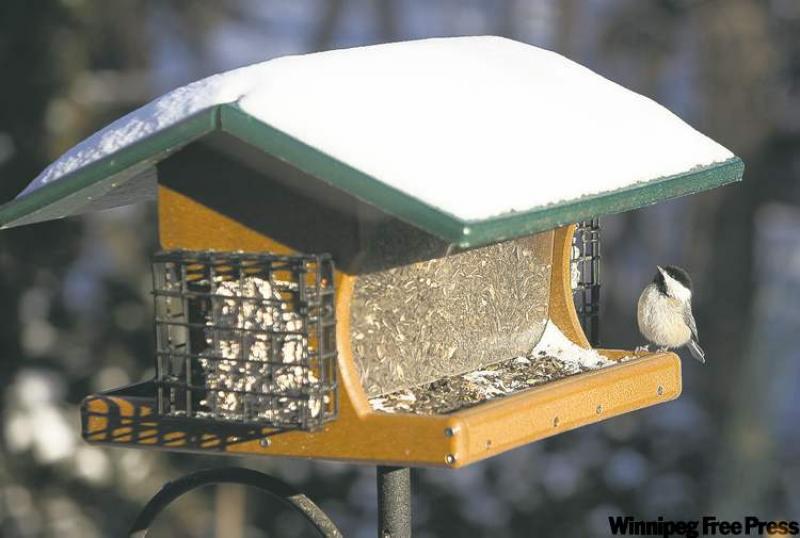
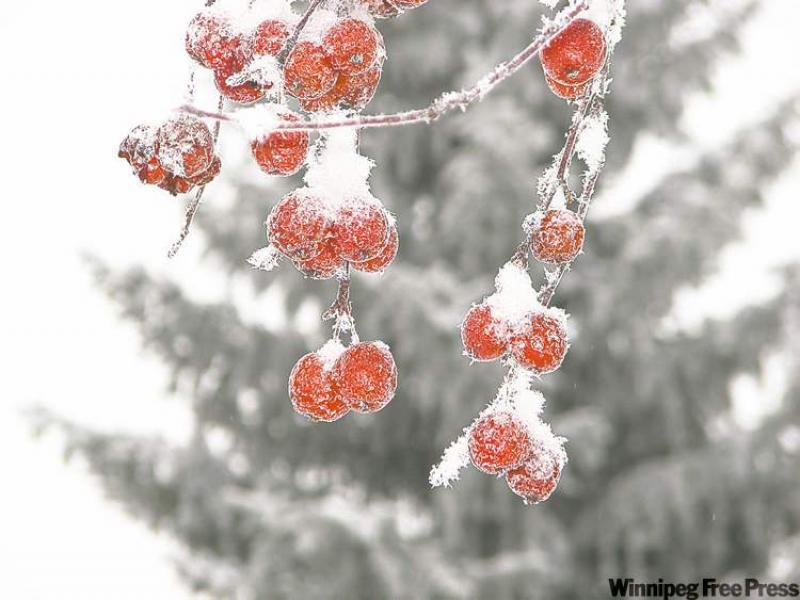
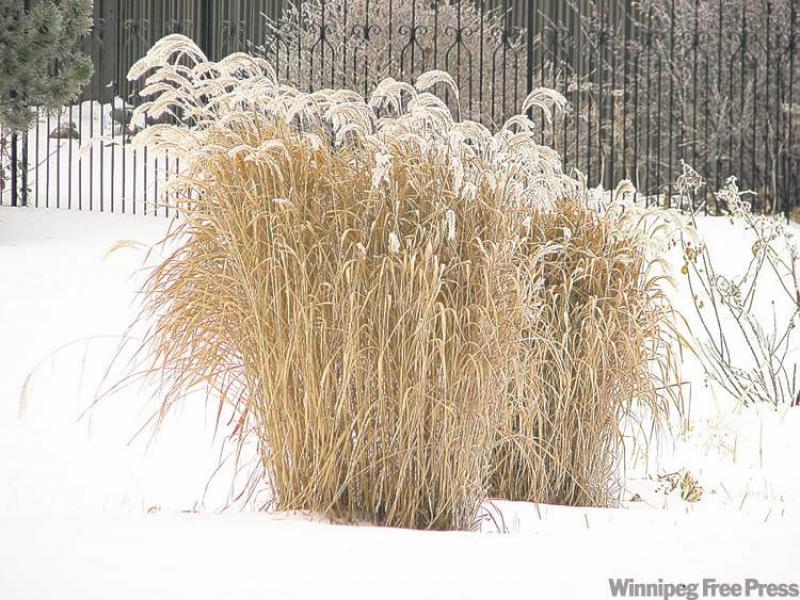
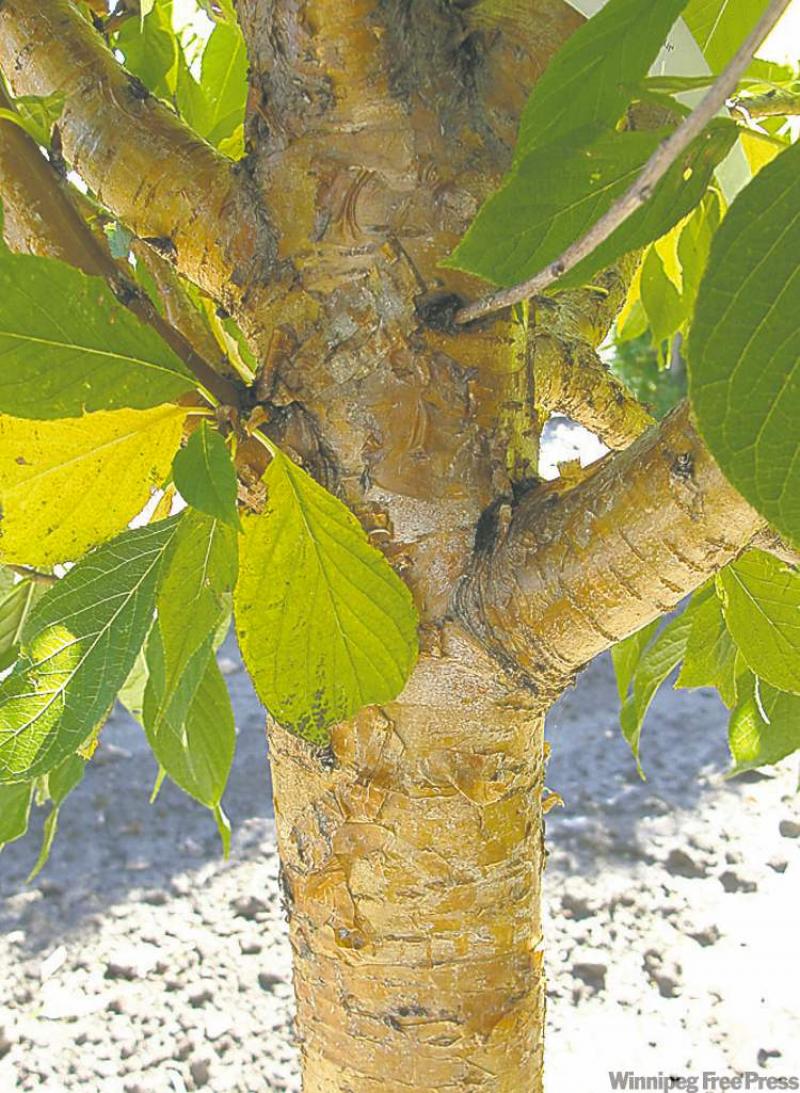
By now gardeners are impatient for spring to return. Winter gives most gardeners, though, a chance to regroup after the busy growing season and to begin planning for the next.
John Tinkler, founder and co-owner of Design Manitoba, as well as the owner of a stunning Winnipeg garden, says, "Gardening is a lot about anticipation and dreaming of what is to come, and that is what the winter months are for: going through catalogues, creating new planting schemes, resolving to do all the necessary jobs in a timely fashion this year -- and other plans that will disappear with the melting snow and the chaotic real life of a Manitoba gardener begins."
Many ideas come from just looking out at the snow-covered garden from the warm comfort of our homes. Trees and shrubs anchor the landscape year-round, and with the huge variety to choose from, your view does not have to be restricted to shades of grey and white or even primarily the texture and year-round colour that evergreens provide.
While herbaceous perennials can decorate the summer landscape with tropical colour and elicit gasps from visitors, the winter scene can be equally dramatic. Snow-covered architectural elements such as arbours, bird baths, wrought-iron features, chairs, benches or even a stone cherub gazing out into the frozen garden also add dimension to the landscape.
The real stars, though, are the trees and shrubs -- the "bones" of the landscape. Whenever a landscape includes a plant with unique features, it almost always becomes a focal point and a conversation piece.
Rick Durand, project leader of the Western Nursery Growers Group tree trials, has been directly involved in the development and introduction of more than 40 varieties of perennials, trees and shrubs that are hardy enough for Prairie gardens. His favourite tree specimen for the winter landscape is the Bur Oak (Quercus macrocarpa). "The Bur Oak becomes the ultimate natural winter splendour when the sparkling, fresh coat of hoarfrost clings to the dark, mature-aged corky bark. How lucky we are to have so many of these native trees in our communities that exemplify strength, majesty and resilience during our legendary Prairie winter."
Trees with persistent berries, such as the Rosybloom Crabapple (Malus spp.) or mountain ash (Sorbus spp.), attract wildlife with their brightly coloured, snow-capped fruit suspended from branches.
It's enjoyable to watch the sheer industriousness of squirrels scrambling up and down the tree trunks, teasing the visiting birds, as they compete for the berries. Philip Ronald, plant breeder and researcher at Jeffries Nurseries in Portage la Prairie, describes the Starlite Flowering Crabapple as an exceptional deciduous tree for winter interest. "Its abundant tiny bead-like fruit are retained into winter; the bright red colour attracts birds and provides a wonderful contrast to winter's snowy landscape." He also recommends Goldspur Amur Cherry, but for a different reason -- its uniquely golden-coloured exfoliating bark. "Thin, golden strips of bark hang loosely around the tree's trunk and branches." Tall shrubs, such as the American Highbush Cranberry (Viburnum trilobum), produce large clusters of showy edible fruit that persist well into the winter. It rates as one of the loveliest four-season shrubs but requires adequate space to grow, as it can reach a mature size of more than 21/2 metres tall and wide.
Evergreens, of course, are always associated with drama in the landscape, simply because of their sheer size and the year-round blue or green colour of their needles. They can look particularly lovely when their boughs are snow-laden, although it is always wise to dislodge some of the snow after a heavy snowfall, especially with the smaller dwarf varieties. Some gardeners fertilize blue spruce during the growing season with chelated iron in order to intensify the blue colour, which is outstanding against the white background of snow.
A beautiful evergreen for a small landscape is the Weeping Norway Spruce. It is exceptionally hardy and its long trailing branches exhibit very little browning in the spring. Its unique shape, though, may not appeal to everyone. My neighbour once remarked to me, after a violent thunderstorm, that its impact on my tree was unfortunate. I thanked him for his concern but explained that it comes by its form quite naturally.
The addition of native prairie grasses that rise above the snow level, such as Karl Foerster Feather Reed grass, helps to create movement and provides some much-needed colour against the stark background of white snow.
Of course, the dominant feature of the winter landscape is snow, but this year, the snow cover has been slow to come. Freezing damage to roots in winter is always a concern for the perennial garden, but generally we can rely on a heavy blanket of snow to provide all the insulation needed for zone hardy plants to overwinter.
The greatest risk to perennials during the winter is when temperatures drop suddenly, as experienced in early January. Freeze-thaw cycles can cause plants to lift with devastating effects to the root system.
What about the effects of wind chill? When early January recorded highs of -5 C with a wind chill of -27, I talked to Jim Bole, a soil specialist and past director of the Morden Research Centre.
"A winter wind can certainly contribute to winter kill of ornamentals, especially conifers such as cedars, but it is through desiccation, not wind chill," he said. "The wind sucks water out of the plants and it cannot be replaced because water in the soil, surface roots and stems is frozen and the tree is dormant.
"But wind chill cannot lower temperatures below the actual air temperatures, so does not contribute directly to winter kill of sensitive plants caused by the effect of low temperatures on living systems. Wind can also remove insulating snow cover from exposed areas, thus making plants more sensitive to winter kill."
What to see
Check out Naturescape programming from Jan. 29 to Feb. 18, FortWhyte Alive, 1961 McCreary Rd.
Jan. 29 - The vanishing of the bees and the ailing queen - 1 p.m.
Feb. 5 - Manitoba's threatened and endangered prairie butterflies - 1 p.m.
Feb. 18 - The great backyard bird count and winter bird feeding
Feb. 19 - Native seed starting and overwintering in the FortWhyte greenhouse
Visit www.fortwhyte.org/calendar for more details or call 989-8355.

